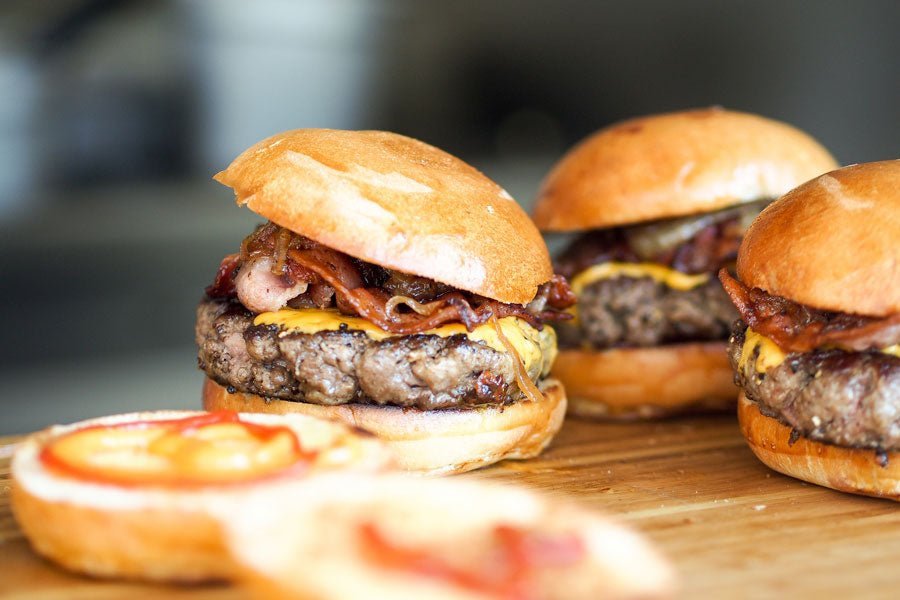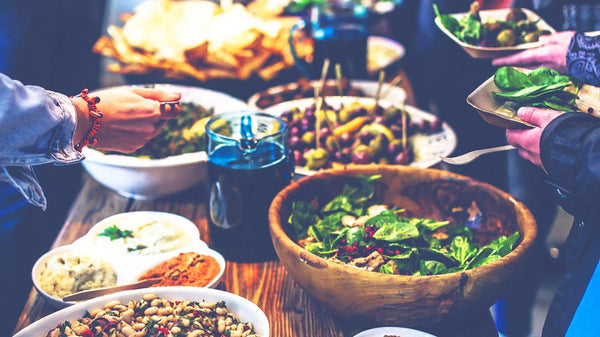
Why you should never salt your rissoles and 7 other food optimisation facts.
I recently listed to an amazing Freakonomics podcast episode called Food + Science = Victory! It was all about food optimisation to get the best flavours possible and for the ultimate nutritional value. I highly recommend listening to the episode, but for those who don’t have the time, I thought I’d put together this easy list of 8 ways to optimise the flavour and nutrition of your food.
Ok let’s get into it!
Interested in Food Science and Nutrition? Check out these great books: Eating on the Wild Side - Jo Robinson The Food Lab - J. Kenji López-Alt
#1 - Salt your Scrambled Eggs 10 minutes before you cook them
Add a bit of salt to your eggs, beat them up and let them sit for 10-15 minutes before you cook them. This helps to lock in all the moisture and will taste a lot better than just cooking them and salting them afterwards like you normally would.#2 - Iceberg Lettuce can't sustain a rabbit, let alone a human
Iceberg lettuce is so low in nutrients that veterinarians don’t even recommend it as rabbit food. Swap out your iceberg lettuce for other darker, more fibrous varieties. Anything with red, purple or really dark green leaves will be much better for you.#3 - Red or Blue Potatoes are much better than White or Brown
The common white or brown potatoes you at the supermarket have an extremely high GI (Glycemic Index). Instead opt for a red or blue skinned potato. Even better, swap it out for a sweet potato instead!#4 - Berries - The wilder, the better!
Wild berries tend to have 2-10 times higher phytonutrients than regular supermarket varieties. If you have a farmers market near you, pop down and try and find yourself some more unique berry varieties. Berries are a great snack as they tend to be quite low carb too!#5 - Make sure to eat your vegetables while they’re still alive!
When you harvest vegetables or fruits they aren’t actually ‘dead’ straight away. They’re still alive for a few days up to a couple of weeks. While they’re still alive, they continue to burn up all their own antioxidants to protect themselves as they’re still breathing in oxygen, but they’re not producing any more antioxidants because plants can’t do that after they’ve been harvested. So, it’s best to eat certain vegetables the day you buy them, if not the next day. Don’t leave these ones in the fridges for 2 weeks! Here are some of the vegetables you want to eat asap after buying or harvesting:- Spinach
- Asparagus
- Broccoli
- Artichokes
- Kale
- Green Onions
- Mushroom
- Parsley
- Cherries
#6 - Raw is best? Only sometimes
It’s common belief that raw vegetables are more nutritious than cooked vegetables as cooking destroys certain enzymes, but this isn’t always the case. These enzymes weren’t created to be nutritious for humans, they’re meant for the plant! Cooking some vegetables such as Broccoli and Kale actually destroys the antioxidants in them. However for most other vegetables, it’s best to lightly steam or blanch them which breaks down the cell walls and makes more of the nutrients available to us. You get 3-4 times more nutrients from a cooked carrot, than from a raw carrot.Did you know: 1 in 4 people don’t like bitter tasting foods. As a result, most large food growers have selectively bred out bitterness from their crops. Unfortunately, it’s this very bitterness in fruits and vegetables that provides us with antioxidants!
#7 - After chopping or crushing Garlic, let it sit for 10 minutes BEFORE cooking it
Garlic has an amazing compound called Allicin. Letting your garlic sit for at least 10 minutes after chopping or crushing it allows this compound to fully form, so you’ll have more of it in the final meal. Allicin and other compounds in garlic have numerous health benefits, from reducing the severity of the common cold (1), to helping reduce blood pressure in people with hypertension (2, 3, 4) and can even help improve your athletic performance (5).#8 - Only add salt to the outside of your beef rissoles
When you add salt to meat it removes moisture from the meat via a process called osmosis. This salt and liquid creates a super salty brine which dissolves some of the muscle's proteins, particularly a protein called Myosin. Once this Myosin protein is dissolved it will start to cross link to form a protein network which will make the rissoles really tough and rubbery. If you need to add salt to flavour them, sprinkle some on while you’re cooking the rissoles! And that’s it. Hopefully you can use a couple of these food optimisation facts to help step up your cooking game!Interested in Food Science and Nutrition? Check out these great books: Eating on the Wild Side - Jo Robinson The Food Lab - J. Kenji López-Alt


